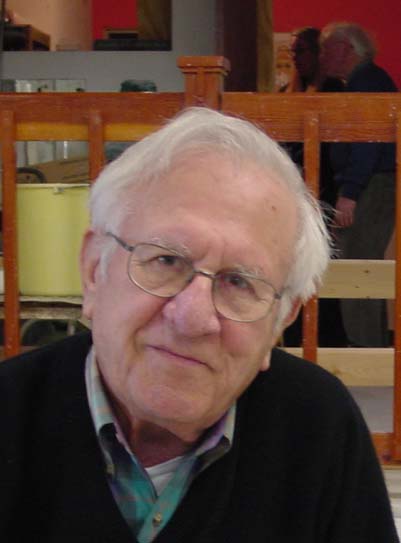-
(b.) - ?1917 February 06
Bio/Description
A pioneer in the computer industry, he is credited with a number of breakthroughs during his professional career, among them early guidance systems and computer circuit designs, and the development of the first business computer, called the Bizmac for the Army Ordnance Command. In March of 1957, the BIZMAC computer was demonstrated publicly for the first time, its operators using it to predict batting averages for the 1957 baseball season. He cites as his greatest contribution the first computer-controlled ?point of sale? cash register. Born in Cincinnati to Shmuel and Rebecca, his parents were both born in Ukraine and immigrated to the United States in the first decade of the 1900s, but they met and married in Cincinnati. At 15, he became a ham radio operator, building his own transmitter, a skill that proved fortuitous when he enlisted in the U.S. Army Signal Corps in January 1942, one month after the Japanese attack on Pearl Harbor. Four months later, he went overseas to the China-Burma-India Theater of Operations, transferred to the Air Corps and trained as a radio-gunner for a B-25 bomber squadron. His skills on the ground, however (including the design of new airplane antennas); were so outstanding that he was promoted to squadron communications chief, though he flew two missions as a volunteer replacement radio operator/gunner. He was awarded a Bronze Star for his work in improving the capabilities and efficiency of communications. After an honorable discharge, he graduated from the University of Cincinnati with a B.S. degree in Electrical Engineering. He joined RCA Advanced Development Department in 1949 where he did early work on servo and guidance systems. When RCA entered the computer field he shifted his interests to that emerging technology, doing early circuit design on various techniques for implementing computer logic. Moving into systems design, he was responsible for the design of a tape-to-tape data sorter, and then responsible for defining methods of controlling the ?accuracy? of all systems in the Bizmac complex. He designed and patented the first electronic library system, which was implemented as an interrogation system for searching for data stored on an array of magnetic tapes. Promoted to Manager of Advanced Product Development he was given the responsibility to define, specify and manage the design of a ?Point of Sales? System. The system involved the design of a central processing computer called Recorder Central with ten satellites, specially designed point of sale ?cash registers?. All data was error checked by feedback data verification. The system had all the capabilities of today?s point of sale systems, including price look up on a large drum storage unit, calculating sales transactions including sales tax, discounts, and credit verification. Over the years, he also worked for General Electric, IBM and Scientific Data Systems. He officially retired at 75, but continues as a consultant to the Shoah Institute and as a Director of the startup Land Drone Co. In 2012 he received the inaugural Inspiration Award of the USC Shoah Foundation Institute, a nonprofit organization established to record testimonies in video format of survivors and other witnesses of the Holocaust.
-
Date of Birth:
1917 February 06 -
Gender:
Male -
Noted For:
Inventor of the first computer-controlled point of sale cash register -
Category of Achievement:
-
More Info:


